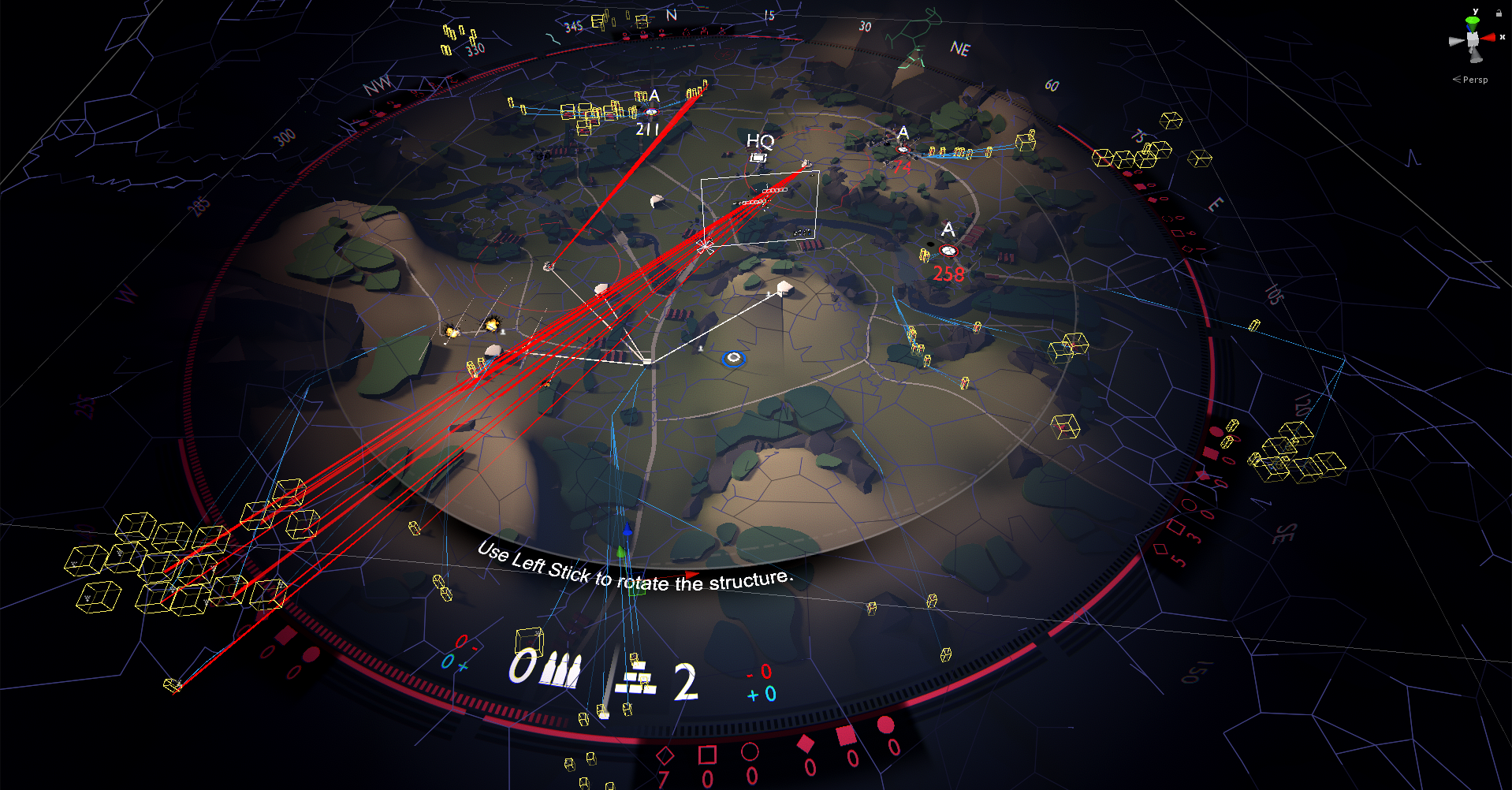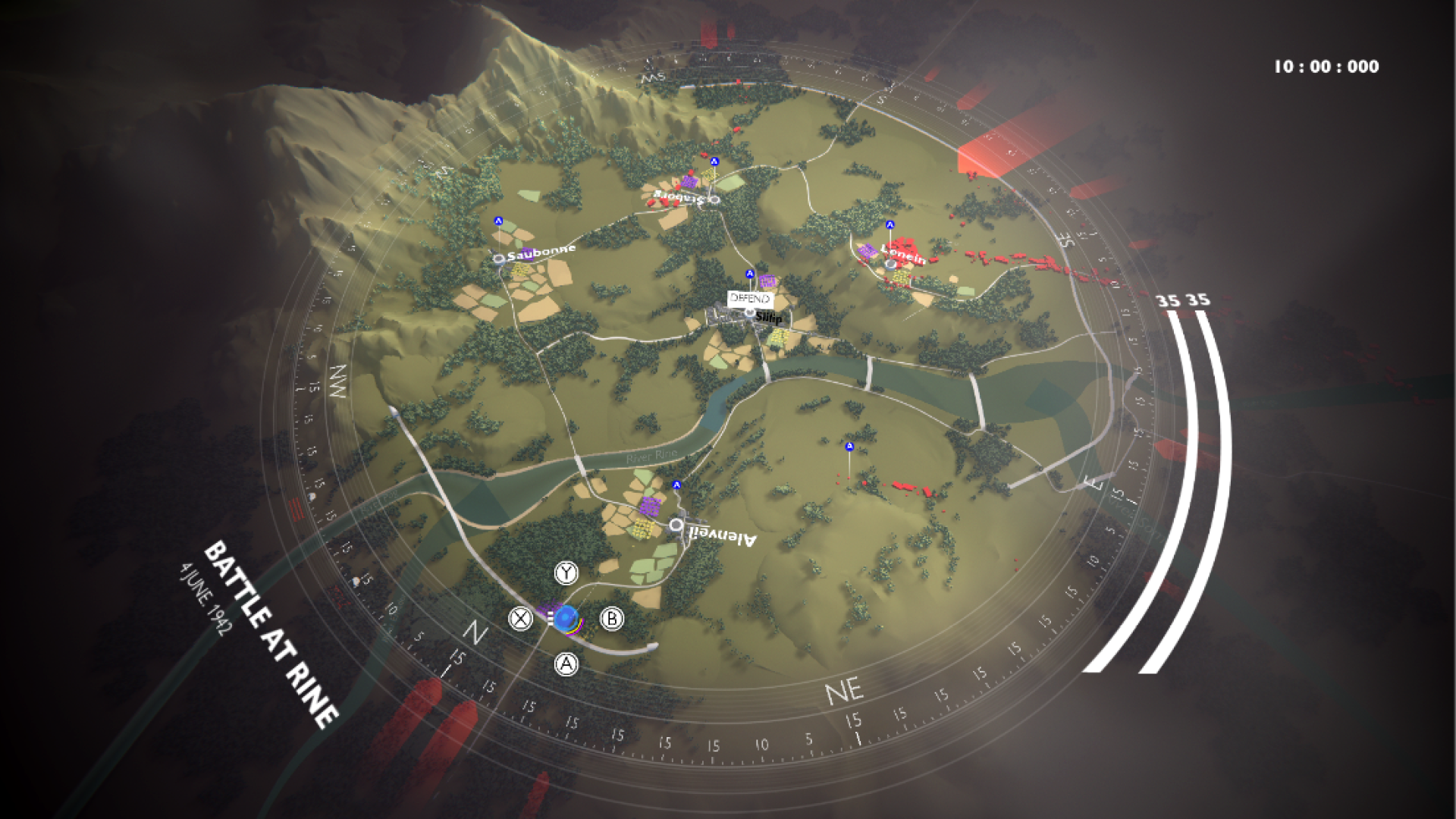STRATEGIC DEPTH
Strategic Depth is a tower defense war game in which structures have a realistic line of sight and limited ammunition. The game’s map presents terrain challenges to the player and their enemies as they react and attempt to perform coordinated attacks.
Designed and implemented a tower defense game with an open map, supply lines, lines of sight, and resource management to find novel and elegant solutions to common RTS game problems.
Engine: Unity
Team: 3
Role: Designer, Programmer, Artist & Producer.
Duration: 10 months
Released: itch.io
Highlights
▼
Objective
Create a modern RTS that addresses as many RTS UX issues as possible.
Challenges
Grounding the game in a real-life context and accurately conveying it through fun gameplay mechanics
Identifying and addressing key challenges in developing an approachable RTS game that feels modern.
Challenge 1
Grounding the game in a real-life context and accurately conveying it through fun gameplay mechanics.
Solution
Extensive research was conducted to inspire novel solutions and mechanics grounded in the WW2 setting. A tower defense game was chosen as the RTS sub-genre, allowing for more straightforward gameplay mechanics and a lower skill ceiling. Simple features were implemented, such as a realistic line of sight for turrets, time-based ammunition building, and leveraging topographical features. Additional supporting features were added while avoiding unnecessary complexities.
Inspirations & Research
Various design principles were researched, e.g., industrial, martial, software, games, and user experience design.
Operation levels of warfare, historic events, world views, and media authentic to the first half of the 20th century strongly inspired Strategic Depth.
Over 500 videos, board, and war games were played, and their UI and UX elements were screenshotted and analyzed.
WW1 and WW2 logistical, strategic, and tactical maps and aerial photography were analyzed and referenced, while Google Maps was used for location scouting.
Real-life and XR military sandbox, war tables, wargames, and Google Maps UI and game maps were used for references.
National War Museum and Armchair Generals community archives were used to analyze maps and events from WW1 and WW2 related to the western and eastern theatres, respectively.
Challenge 2
Addressing deeply rooted issues in a well-established RTS genre.
Solutions
Identified areas of concern and focused on finding practical solutions with minimal design and implementation costs.
I identified common challenges with RTS games that novice and even experienced players struggled with and tried to find solutions to them.
Challenges
Micromanagement of many units and events
Macro management of complex economies
Lack of spatial awareness due to the unusual perspective
Keeping track of many things that happen outside of the view
Complex input mappings
High bar for entry due to prerequisite games literacy
Abstract gameplay mechanics not grounded in real-life literacy
Lack of support from more experienced players due to the absence of coop
Heavily nested interfaces with many options
Then I tried finding solutions through a rigorous and extensive process of integrating and playtesting solutions that had the most potential.
Solutions
Limited and impactful set of unit options and resources
Gameplay grounded in real-life concepts leveraging real-world literacy
Reduce the need to navigate the map by keeping the game to one screen using a circular map to remove the dead corners and improve UI
Simplified unit UI “pallet“ with minimal travel distance and nesting
Dedicate input manager that dynamically adjusts to support and visualize any inputs.
Teaching players how to play the game starting from the first loading screen
2 player coop with rubberbanding difficulty for experience exchange
Examples of solutions
Teaching the players basic core gameplay controls from the first second they start the game.
Dynamically adjusting 3Cs systems to support up to 2 players coop with joining leaving and remapping input devices on the spot.
A pallet of actions instead of a Hud with a binary selection of a structure to reduce cursor travel distance and reduce the number of actions.
Most structures have unique actions supporting novice players in coop settings and players wanting to micromanage more.
Structures have ammo supplied by HQ and a realistic line of sight that increases based on the elevation or can be blocked by obstructions.
Player-driven objectives determine playstyle. Players designate a town as HQ to defend. The better they do on harder difficulties, the more point they get
Additional Notes
▼
Overview
The motivation for this project was to make a strategy game for people interested in strategy games but find them off-putting. The following design pillars were based on solutions to problems in strategy games that novices find off-putting.
Pillars
Players must never lose track of any entity on the battlefield and always be able to view the entire battlefield simultaneously.
In a strategy game, novices and experts must be able to play it collaboratively and find it fun on the first try while their resources and structures are shared.
Macros, shortcuts, or nested information that players need to look for or memorize, must not be in the game, while every action must be at the player’s fingertips.
DESIGN NOTES
Simulation of gameplay through paper prototypes and visualization of user stories,
Extensive notes were taken to support the development and to keep track of brainstorming session outcomes.
Many game features were produced and evolved because of trying to solve various conceptual and technical issues. Most of them were shelved.
Problems were seen not as barriers to success but as opportunities to make more impactful and memorable the solution.
PROJECT ITERATIONS
5 prototypes of Strategic Depths prototypes were developed to identify challenges with the project, test the feasibility and determine if the concept is truly fun. Afterward, the project was iterated for 7 months and it was consistently tested with a fresh group of playtesters every week. Strategic Depth was remade from scratch 3 times, and its entire UI and visuals were remade from scratch several dozen times. This process allowed us to solve issues without being restricted by the project architecture. Furthermore, instead of assumptions, data, experience, and theory were leveraged to solve problems. The project was polished for 2 months, and the UI and flow of Strategic Depth were balanced and amplified.
The screenshots showcase how strategic depth evolved from the first prototype to its current stage.


















































































